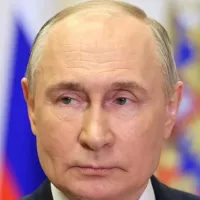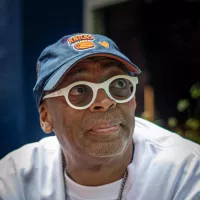World War III is a hypothetical future global conflict, envisioned as a successor to World War I and World War II. Predictions suggest it would involve all major global powers and potentially the use of nuclear or other weapons of mass destruction. This would result in unprecedented levels of destruction and loss of life, exceeding the scale of all previous wars. The potential for global devastation is a key characteristic associated with the concept of World War III.
November 1941: Time Magazine's "World War III?"
In November 1941, Time magazine used the term "World War III?" in an article about Nazi refugee Hermann Rauschning.
December 1941: Japanese Attack on Pearl Harbor
In December 1941, the Japanese attacked Pearl Harbor.
March 1943: Time Magazine's "World War III?" Regarding Wallace's Statements
In March 1943, Time magazine reused the title "World War III?" in reference to statements by Vice President Henry A. Wallace.
1944: Time Magazine Mentions "World War III"
In 1944, Time magazine continued to mention the term "World War III" in its stories.
May 1945: Development of Operation Unthinkable
In April–May 1945, the British Armed Forces developed Operation Unthinkable, considered the first scenario of the Third World War, aiming to impose the will of the United States and British Empire on Russia, though it was rejected as militarily unfeasible.
1945: Time Magazine Mentions "World War III"
In 1945, Time magazine continued to mention the term "World War III" in its stories.
1945: Development and Use of Nuclear Weapons
In 1945, the Manhattan Project developed nuclear weapons, and the United States used them in the atomic bombings of Hiroshima and Nagasaki, which raised concerns about a potential nuclear apocalypse and became a common theme in speculation about World War III.
1946: Time Magazine Mentions "World War III" and Bacterial Warfare
In 1946, Time magazine mentioned "World War III" in connection with bacterial warfare.
1947: Time Magazine Mentions "World War III"
In 1947, Time magazine continued to mention the term "World War III" in its stories.
1948: Time Magazine Mentions "World War III"
In 1948, Time magazine continued to mention the term "World War III" in its stories.
1948: Coastal Survey by British and Irish Armed Forces
In 1948, the armed forces from Britain and Ireland began a coastal survey, cooperating at the request of the United States to identify suitable landing grounds for the US in the event of a successful Soviet invasion.
1949: Einstein's Prediction of World War III
In 1949, physicist Albert Einstein, reflecting on the advent of nuclear weapons, warned that a potential World War III would be so devastating that it would revert mankind to the Stone Age. He famously remarked, "I know not with what weapons World War III will be fought, but World War IV will be fought with sticks and stones."
1949: Soviet Union Acquires Nuclear Weapons
In 1949, the Soviet Union acquired nuclear weapons, further escalating the risk of a potential third world war.
1949: Exercise Verity by Western Union Defence Organization
In 1949, the Western Union Defence Organization carried out Exercise Verity, a multilateral exercise involving naval air strikes and submarine attacks.
January 1950: NATO Approves Military Strategy of Containment
In January 1950, the North Atlantic Council approved NATO's military strategy of containment.
December 1950: American Fears of World War III
In December 1950, a Gallup poll revealed that over half of Americans believed World War III had already begun, reflecting widespread fear and anxiety amidst growing Soviet-American tensions in the post-World War II period.
1950: Start of the Korean War
In 1950, the Korean War began as a regional proxy war, though it did not escalate into a full-scale global conflict.
April 1951: Establishment of Allied Command Europe
On April 2, 1951, Allied Command Europe was established under General Dwight D. Eisenhower to deter aggression and ensure the defense of Western Europe.
1951: CBS News Correspondent's Prediction
In 1951, CBS News war correspondent Bill Downs expressed his belief that the Korean War was the beginning of World War III, highlighting the conflict as the first battle in a major international struggle involving the Far East and the entire world.
1952: Exercise Mainbrace
In 1952, Exercise Mainbrace brought together 200 ships and over 50,000 personnel to practice the defense of Denmark and Norway from a Soviet attack, marking the first major NATO exercise.
1952: Exercises Grand Slam and Longstep
In 1952, Exercises Grand Slam and Longstep were naval exercises held in the Mediterranean Sea to practice dislodging an enemy occupying force and amphibious assault, involving over 170 warships and 700 aircraft.
1953: Agreement on Sharing Wartime Weather Information and Evacuation
By 1953, the United Kingdom and Ireland agreed to share information on wartime weather and the evacuation of civilian refugees from Britain to Ireland.
1953: Attack on Sui-ho Dam
In 1953, during the Korean War, a Russian/Soviet warplane was destroyed by a NATO member state during the attack on the Sui-ho Dam. This event was recalled in November 2015 when a similar incident occurred, highlighting the rarity and potential escalatory nature of such confrontations.
1953: End of the Korean War
In 1953, the Korean War ended, remaining a regional conflict without triggering a global war.
1955: Start of the Vietnam War
In 1955, the Vietnam War began as a regional proxy war, but did not escalate into a full-scale global conflict.
1955: Coastal Survey by British and Irish Armed Forces Ends
In 1955, the joint coastal survey by British and Irish armed forces, which was requested by the United States, concluded.
1957: Exercise Strikeback
In 1957, Exercise Strikeback was a major NATO naval exercise simulating a response to an all-out Soviet attack on NATO, involving over 200 warships, 650 aircraft, and 75,000 personnel.
1961: The Berlin Crisis
In 1961, The Berlin Crisis, a tense political-military confrontation, unfolded between U.S. and U.S.S.R. armed forces at Checkpoint Charlie, involving a standoff of American and Soviet/East German tanks and troops. The crisis stemmed from the occupational status of Berlin and post-World War II Germany, escalating from a Soviet ultimatum demanding the withdrawal of armed forces from Berlin and culminating in the construction of the Berlin Wall, de facto partitioning the city.
1962: Cuban Missile Crisis
In 1962, the Cuban Missile Crisis brought the U.S. and Soviet Union to the brink of war, after which the doctrine of mutually assured destruction became widely accepted.
1966: End of Ireland's Operation Sandstone
In 1966, Ireland's Operation Sandstone, a top-secret British-Irish military cooperation, ended.
1968: Downs Repeats World War III Belief
In 1968, CBS News war correspondent Bill Downs reiterated his view that the Korean War was the beginning of World War III while reporting on the USS Pueblo incident on ABC Evening News, reinforcing his earlier stance on the escalating global conflict.
March 1969: Sino-Soviet Border Conflict
In March 1969, the Sino-Soviet border conflict, an undeclared military border war, intensified between the Soviet Union and China, marking a significant point in the Sino-Soviet split. The most serious clashes occurred near Zhenbao (Damansky) Island on the Ussuri (Wusuli) River, bringing the two communist states to the brink of war.
1969: Aftermath of the Sino-Soviet Border Conflict
In 1969, following the Sino-Soviet border conflict, relations between China and the USSR remained strained despite ongoing border talks. Domestically, the threat of war led to China's thorough militarization, marking a new phase in the Cultural Revolution. The 9th National Congress of the Chinese Communist Party confirmed Defense Minister Lin Biao as Mao Zedong's successor.
1969: Soviet Military Buildup
In 1969, in response to the border clashes, the Soviet Union increased its military presence along the Sino-Soviet border and in the Mongolian People's Republic, escalating tensions and demonstrating a show of force.
1975: End of the Vietnam War
In 1975, the Vietnam War ended, remaining a regional conflict without triggering a global war.
1979: Start of the Soviet-Afghan War
In 1979, the Soviet-Afghan War began as a regional proxy war, but it did not escalate into a full-scale global conflict.
1979: Development of "Seven Days to the River Rhine" Exercise
In 1979, the Warsaw Pact developed the top-secret military simulation exercise "Seven Days to the River Rhine", which assumed a NATO nuclear attack and envisioned a Soviet counter-strike against West Germany, Belgium, the Netherlands, and Denmark.
March 1983: Reagan Proposes Strategic Defense Initiative
On March 23, 1983, US President Ronald Reagan proposed the Strategic Defense Initiative (SDI), aiming to develop a technological solution to shoot down incoming ICBMs, thus making the US invulnerable to a first strike.
November 1983: Start of Able Archer 83
In November 1983, "Able Archer 83", a five-day NATO command post exercise, began, simulating a period of conflict escalation culminating in a coordinated nuclear attack.
1983: Near Accidental Launch Incident
In 1983, a false warning incident occurred, highlighting the risk of a retaliatory nuclear launch. The New England Journal of Medicine overview in 1998 referred to this event as a likely 'accidental-attack' scenario, emphasizing the continued danger of nuclear war.
1983: Soviet Response to Able Archer 83
In 1983, the realistic nature of the Able Archer 83 exercise, combined with deteriorating US-Soviet relations, led some Soviet officials to believe it was a ruse for a genuine nuclear first strike, prompting them to ready their nuclear forces.
1983: "1983 war scare"
The "1983 war scare" is considered by many historians to be the closest the world has come to nuclear war since the Cuban Missile Crisis. The threat of nuclear war ended with the conclusion of the exercise on 11 November, 1983.
1984: Establishment of the Strategic Defense Initiative Organization
In 1984, the Strategic Defense Initiative Organization (SDIO) was set up within the United States Department of Defense to oversee the Strategic Defense Initiative, focusing on strategic defense rather than strategic offense.
1989: End of the Soviet-Afghan War
In 1989, the Soviet-Afghan War ended, remaining a regional conflict without triggering a global war.
1991: Dissolution of Soviet Union
Even after the end of the Cold War and the dissolution of the Soviet Union in 1991, some incidents afterward have been described as close calls in potentially triggering World War III.
1991: End of the Cold War
In 1991, the Cold War ended, shifting speculation about World War III toward emerging threats.
1991: The End of the Military Superpower Standoff
In 1991, with the end of the military Superpower standoff that began in the 1940s, many historians and analysts, including Bill Yenne, concluded that this period, characterized by a lack of direct action due to the fear of nuclear war, should not be considered World War III. The consensus highlights the necessity of large-scale warfare involving many principal nations for a conflict to be classified as a world war.
1992: Withdrawal of US Tactical Nuclear Weapons from the United Kingdom
Until 1992, the United Kingdom received US tactical nuclear weapons, such as nuclear artillery and Lance missiles, primarily deployed in Germany.
1994: US-Russia Mutual Detargeting Agreement
In 1994, the United States and Russia entered into a mutual detargeting agreement, but this agreement was largely symbolic and did not significantly reduce the time required to launch a nuclear attack, according to the New England Journal of Medicine overview in 1998.
1998: Continued Threat of Nuclear Attack
In 1998, the New England Journal of Medicine overview found that the threat of a nuclear attack did not disappear with the end of the Cold War. The risk of a retaliatory launch due to a false warning, similar to the 1983 incident, remained the most likely 'accidental-attack' scenario.
June 1999: Pristina Airport Incident
In June 1999, following the Kosovo War, Russian peacekeepers occupied Pristina International Airport, leading to a tense standoff with NATO troops. General Wesley Clark ordered the use of force against the Russians, but General Mike Jackson refused, famously stating "I'm not going to start the Third World War for you". Captain James Blunt also defied Clark's orders, preventing a potential escalation.
2004: Podhoretz's Perspective on the Cold War
In 2004, commentator Norman Podhoretz suggested that the Cold War, from the surrender of the Axis powers to the fall of the Berlin Wall, could be considered World War III. He further posited that the global campaign against Islamofascism should be viewed as "World War IV".
2005: US Nuclear Weapons Deployed in Europe under Nuclear Sharing Arrangement
As of 2005, 180 tactical B61 nuclear bombs of the 480 US nuclear weapons believed to be deployed in Europe fall under the nuclear sharing arrangement, stored in hardened aircraft shelters and delivered by F-16 Fighting Falcons and Panavia Tornados.
February 2015: Iraqi Foreign Minister Declares 'World War III'
In February 2015, Iraqi Foreign Minister Ibrahim al-Jaafari declared that the war against the Islamic State was effectively "World War III", citing the group's global caliphate ambitions and its successful expansion of conflict beyond the Levant region.
November 2015: Downing of Russian Sukhoi by Turkey
In November 2015, the Turkish Air Force shot down a Russian Sukhoi attack aircraft at the Turkey-Syria border. Turkey claimed the aircraft violated its airspace, a claim Russia denied. The incident, the first destruction of a Russian/Soviet warplane by a NATO member since 1953, sparked concerns about a potential escalation into a world war.
2015: Time Magazine's "This Is What World War III Will Look Like"
In 2015, Time magazine used the term "World War III" in a book review titled "This Is What World War III Will Look Like".
January 2016: Obama's Remarks on ISIL and World War III Claims
In January 2016, during his State of the Union Address, US President Barack Obama cautioned against exaggerating ISIL's capabilities and irresponsible claims about it sparking World War III. He emphasized the need to eliminate the threat posed by ISIL fighters, while asserting they did not threaten the nation's existence.
2018: RAND Corporation report on AI and nuclear security
In 2018, a RAND Corporation report stated that AI and associated information technology would significantly impact nuclear security issues in the next 25 years, potentially destabilizing second-launch capabilities and decision support systems.
2020: Doomsday Clock advanced
In 2020, the Bulletin of the Atomic Scientists moved the Doomsday Clock forward, due in part to the predicted destabilizing effect of upcoming hypersonic weapons.
February 2022: Russian Invasion of Ukraine
In February 2022, Russia's President Vladimir Putin ordered a full-scale invasion of Ukraine, marking a major escalation of the Russo-Ukrainian War that began in 2014. This invasion became the largest war in Europe since World War II, raising concerns among experts and analysts about the heightened risk of a third world war.
2022: Russian Invasion of Ukraine
Since 2022, the Russian invasion of Ukraine has been perceived as a potential flashpoint for a third world war.
2023: Doomsday Clock advanced
In 2023, the Bulletin of the Atomic Scientists advanced its Doomsday Clock, citing among other factors a predicted destabilizing effect from upcoming hypersonic weapons.
2023: Escalation Risks in Ukraine War
In early 2023, amidst the ongoing war in Ukraine, tensions escalated as Russia threatened retaliation against countries providing military aid to Ukraine, viewing NATO's involvement as a "proxy war." Senior Russian politicians hinted at potential nuclear weapon use if certain "red lines" were crossed. Simultaneously, Putin suspended Russia's participation in the New START treaty and announced plans to deploy tactical nuclear weapons in Belarus, heightening fears of a larger conflict. US and NATO officials emphasized preventing the conflict from escalating into a third world war.
July 2024: Easing Restrictions on NATO Weapons Use
Since July 2024, NATO countries have permitted Ukraine to use NATO weapons to strike military targets inside Russia, but only near the border and for self-defense. This decision came after initial hesitations to prevent escalation, with NATO countries previously restricting advanced weapon deliveries and prohibiting strikes into Russia. Despite Russia's earlier threats, no nuclear weapons have been used, even with most "red lines" crossed.
November 2024: Russia Deploys North Korean Troops
In November 2024, Russia escalated the conflict in Ukraine by deploying 10,000 North Korean troops to its border to fight, following a defense pact signed earlier in the year between Russia and North Korea. Additionally, President Putin remarked that the war "has acquired elements of a global character", asserting Russia's right to strike military facilities in countries allowing their weapons to be used against Russia.
February 2025: Failed U.S.-Ukraine Agreement
In February 2025, a meeting between U.S. President Donald Trump, Vice President JD Vance, and Ukrainian President Volodymyr Zelenskyy to negotiate U.S. access to Ukrainian oil, gas, and rare earths ended without an agreement due to disagreements and accusations of ingratitude by President Trump. Trump warned Zelenskyy he was "gambling with World War Three" due to America's involvement and later stated that Zelenskyy was not ready for peace with America's involvement.
Mentioned in this timeline

Vladimir Vladimirovich Putin is a Russian politician and former intelligence...
Ukraine is a large country in Eastern Europe second in...

Barack Obama the th U S President - was the...
CBS Broadcasting Inc CBS is a prominent American commercial broadcast...
The Union of Soviet Socialist Republics USSR existed from to...
India officially the Republic of India is a South Asian...
Trending

11 days ago Dick Vitale and Charles Barkley Team Up for College Basketball Broadcasts This Season

1 month ago Kim Kardashian's 'All's Fair' TV show faces criticism despite Niecy Nash's defense.
10 days ago Marcus Freeman: Notre Dame coach considered for Giants head coaching vacancy in NFL.
Jeremiyah Love is an American college football running back He currently plays for the Notre Dame Fighting Irish He is...

7 months ago Trump's Tariffs Threaten Cannes 2025, SAG-AFTRA Responds, Impacting Spike Lee's Industry.

7 months ago Mitchell Robinson's Playoff Impact: Knicks' Gamble Pays Off as Hart Shines in Game 3
Popular

Candace Owens is an American conservative political commentator and author...

Ilhan Omar is an American politician currently serving as the...

XXXTentacion born Jahseh Dwayne Ricardo Onfroy was a controversial yet...

Tom Cotton is an American politician and Army veteran currently...
The Kennedy Center Honors are annual awards recognizing individuals and...
Matt and Ross Duffer known as the Duffer Brothers are...
